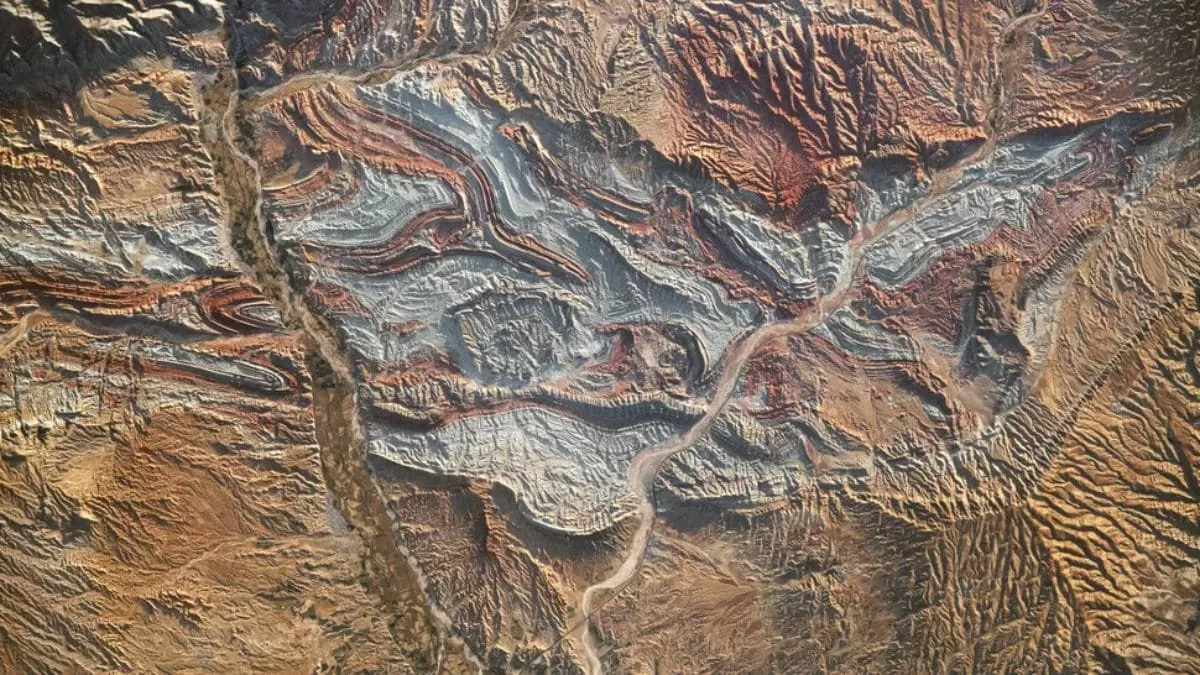Iran’s Zagros Mountains: A Testament to Continental Tectonics and Earth’s Structural Evolution
When one thinks of Iran, images of bustling cities, ancient ruins, and majestic mosques may come to mind. But hidden within this Middle Eastern country lies a geological wonder that is just as awe-inspiring – the Zagros Mountains. Stretching over 1,600 kilometers from north-western Iran to the border of Iraq, these mountains showcase tightly folded rock layers that bear witness to the slow-motion collision of two massive tectonic plates – the Arabian and Eurasian plates.
From Space to Earth: The View of Zagros Mountains
One does not need to be an astronaut to truly appreciate the grandeur of the Zagros Mountains. These geological structures are so impressive that they are visible from space, a testament to their immense size and scale. With their intricate folds and valleys, the Zagros Mountains are a sight to behold, and their magnificence only increases as one gets closer to them.
The Zagros Mountains are a natural border between the Iranian plateau and the Mesopotamian plain, and they have played a significant role in shaping the landscape and history of the region. But these mountains are not just mere physical barriers; they are a geological marvel that holds valuable insights into the formation of mountains, seismic activity, and the ongoing structural evolution of our planet.
The Power of Continental Tectonics
The Zagros Mountains are a result of the collision between the Arabian and Eurasian plates, which has been ongoing for millions of years. This slow-motion collision has caused the Earth’s crust to buckle and fold, creating the majestic peaks and valleys of the Zagros. The power of this continental tectonic collision is evident in the tightly folded rock layers that make up these mountains, with some folds measuring up to 10 kilometers in height.
But the Zagros Mountains are not just a static display of continental tectonics; they are constantly evolving and changing. The ongoing convergence of the Arabian and Eurasian plates continues to shape these mountains, with earthquakes and other seismic activities being a regular occurrence in the region. In fact, the Zagros Mountains are one of the most seismically active regions in the world, with numerous faults and fractures running through its layers.
A Window into Mountain Formation and Earth’s Structural Evolution
The Zagros Mountains are more than just a geological wonder; they also provide scientists with a unique opportunity to study the processes involved in mountain formation. The intricate folds and layers of the mountains give valuable insights into the forces at play during continental collisions, and the ongoing seismic activity provides a glimpse into how these structures continue to evolve over time.
But perhaps the most significant contribution of the Zagros Mountains is in understanding Earth’s structural evolution. The collision of the Arabian and Eurasian plates has been ongoing for millions of years, and the Zagros Mountains are a physical record of this process. By studying the layers and structures of these mountains, scientists can gain a better understanding of how our planet has changed and evolved over time.
Preserving the Zagros Mountains: A Responsibility for All
The Zagros Mountains are a geological treasure that needs to be protected and preserved for future generations. While these mountains may seem indestructible, they are not immune to the effects of human activity. Deforestation, overgrazing, and pollution are just some of the threats facing the Zagros Mountains. Therefore, it is essential for all of us to recognize our responsibility in preserving this natural wonder.
In recent years, there have been efforts to protect and conserve the Zagros Mountains, such as the establishment of national parks and conservation projects. But more needs to be done, and it is up to us to ensure that these efforts continue and expand. After all, the Zagros Mountains are not just a geological wonder, but they also provide valuable resources for the local communities, including water, minerals, and fertile soil.
In Conclusion
The Zagros Mountains of Iran are more than just a physical feature; they are a testament to the power and complexity of continental tectonics and Earth’s structural evolution. With their tightly folded rock layers and ongoing seismic activity, these mountains provide valuable insights into mountain formation and the evolution of our planet. As we continue to marvel at their beauty and grandeur, let us also remember our responsibility in preserving and protecting this natural wonder for future generations.

